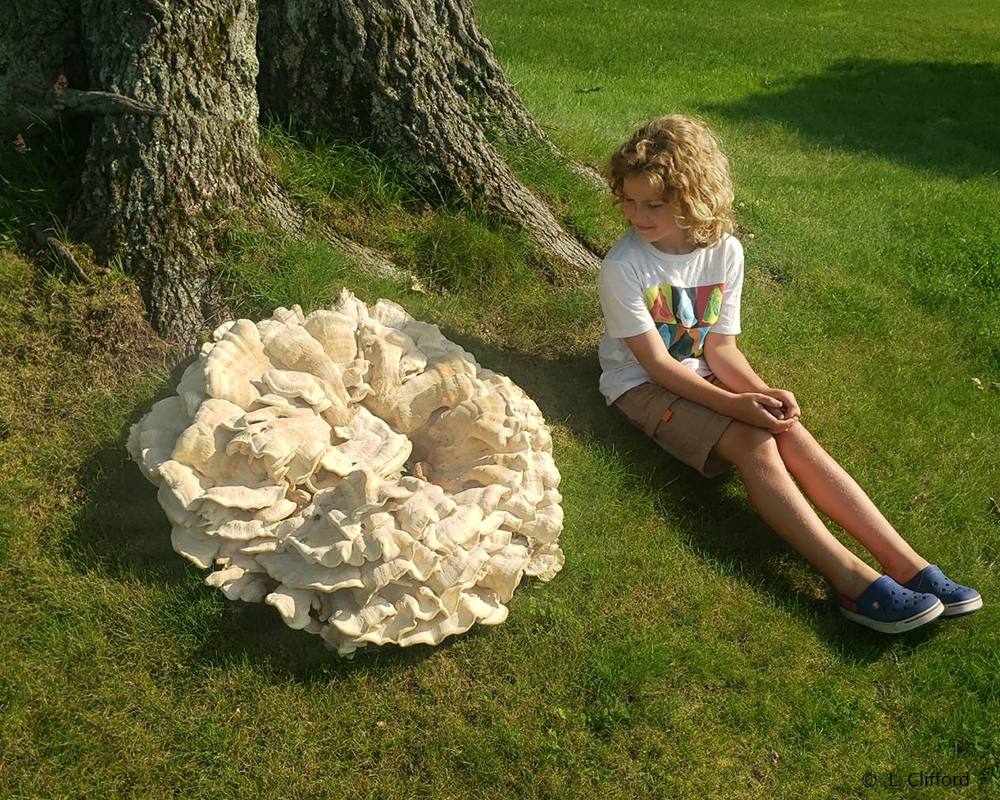Berkeley’s Polypore Fruiting

Polypores are a group of fungi that bear their spores in tubes, or pores, rather than gills. One of the largest mushrooms to fruit on living trees is Berkeley’s Polypore (Bondarzewia berkeleyi), often found on hardwoods, especially on oak trees. Its growth is unusual in both size and form. When the fruiting body starts to emerge, it resembles a giant hand with short, fat fingers. The tips of the “fingers” expand into huge, flat, fan-like shapes up to ten inches wide that together form an irregular rosette. The rosette can be more than three feet across and can weigh up to 30 pounds.
You usually find this fungus at the base of trees, but it can fruit from the ground far from any tree if there are roots or the remnants of an old stump beneath the ground, for it is saprophytic (lives on dead or decaying trees) as well as parasitic.
Berkeley’s Polypore is edible when it is young. With age, the fruiting body becomes increasingly tough and has been compared to eating cardboard. It goes without saying that one should be sure of the identity of any fungus before consuming it. (Photo of Berkeley’s Polypore & Leo Clifford by Lawrence Clifford.)
Naturally Curious is supported by donations. If you choose to contribute, you may go to http://www.naturallycuriouswithmaryholland.wordpress.com and click on the yellow “donate” button.
Boletes Fruiting
 Boletes are fleshy terrestrial mushrooms that have sponge-like tubes, not gills, as most mushrooms have, under their caps. (Polypores also have tubes, but are tough and leathery and usually grow on wood.) Spores develop on basidia (club-shaped, spore-bearing structures) which line the inner surfaces of the tubes. Because the basidia are vertically arranged, the spores, when mature, drop down and disperse into the air.
Boletes are fleshy terrestrial mushrooms that have sponge-like tubes, not gills, as most mushrooms have, under their caps. (Polypores also have tubes, but are tough and leathery and usually grow on wood.) Spores develop on basidia (club-shaped, spore-bearing structures) which line the inner surfaces of the tubes. Because the basidia are vertically arranged, the spores, when mature, drop down and disperse into the air.
The majority of bolete species are edible, but there are two reasons not to harvest them unless you are with an expert. One reason being that there are some poisonous bolete species. The second reason is that because they are large and fleshy, larvae can often be found inhabiting them, as well as parasites.
Naturally Curious is supported by donations. If you choose to contribute, you may go to http://www.naturallycuriouswithmaryholland.wordpress.com and click on the yellow “donate” button.



















What Other Naturally Curious People Are Saying